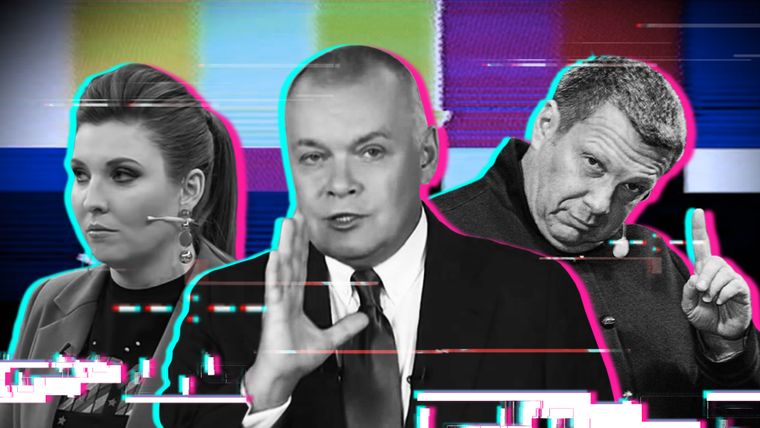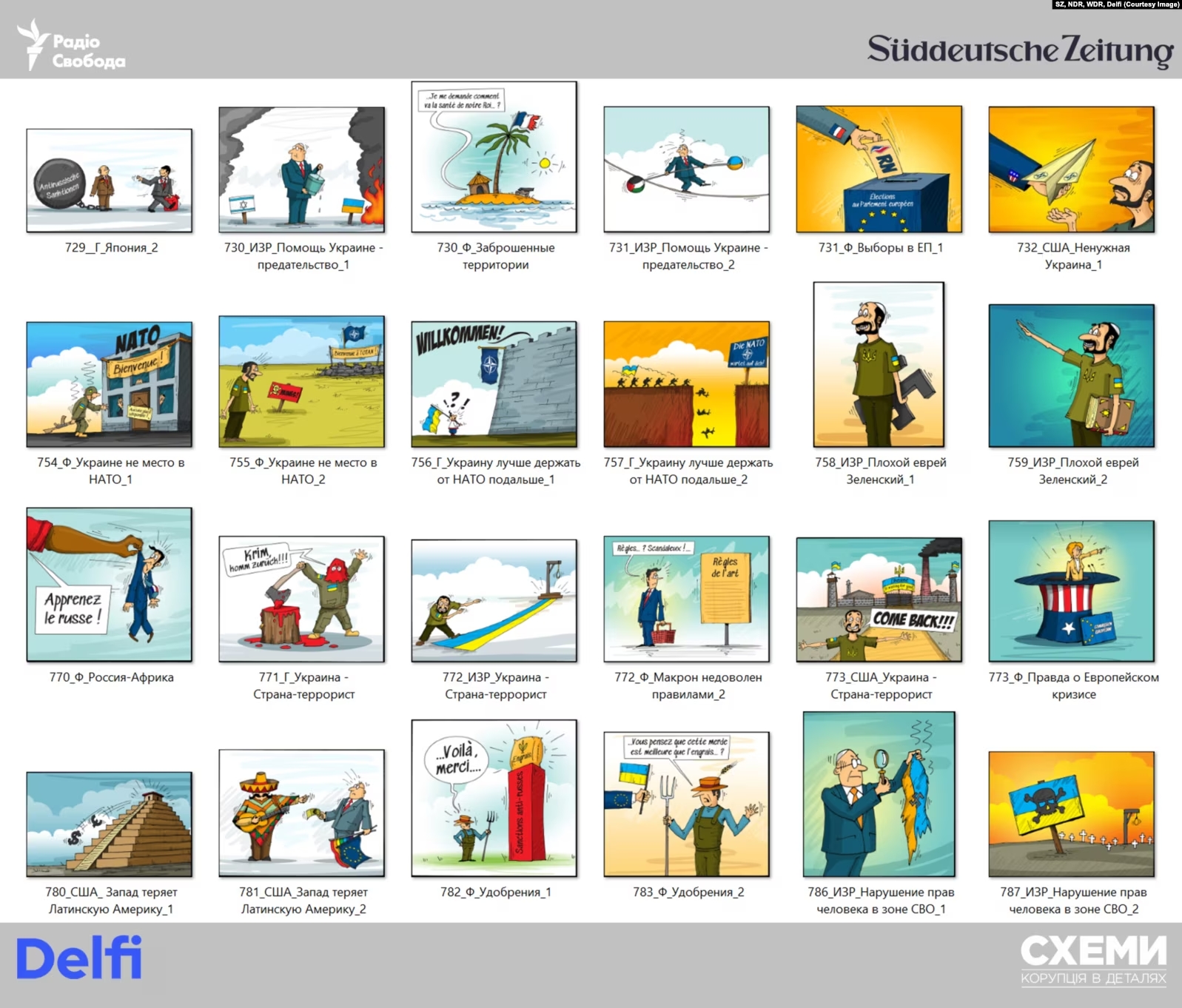"The whole of Ukraine needs to be simply etched off the map so that this country is not on the map. We need to wipe them from the earth," Russian soldier Ivan Klimenko told his mother in an intercepted phone call in April 2022, when the world first witnessed Russian atrocities in Bucha.
"The US did this to them," his mother responded briefly before Ivan vowed to shoot all Ukrainians on his way and carve swastikas on their bodies.
His words — shocking to most — echo rhetoric that has filled Russian media for years. Klimenko’s words reflect a broader narrative ingrained in Russian discourse.
What may seem unimaginable elsewhere has become part of everyday conversation in Russia, training ordinary Russians to commit 161,000 war crimes recorded by Ukraine’s Prosecutor General – and seeping into playlists, newfeeds, and TikTok reels across the world.
Russia pours $1.4 billion into reality distortion
"We will kill as many of you as we have to. We will kill 1 million or 5 million. We can exterminate all of you until you understand that you're possessed and you have to be cured," declared Pavel Gubarev, a former head of the puppet “Donetsk People’s Republic,” in 2023.
This psychological transformation — from ordinary citizen to war crime apologist — stems from a savvy propaganda ecosystem the Kremlin’s 2025 draft budget poured $1.4 billion into— a 13% increase from last year. In comparison, in January 2025, Moscow harvested the same profit from its gas exports in just a month.
Moscow also allocated 7 billion rubles ($72 million) for propaganda in Ukraine’s occupied territories, home to nearly 5 million people — a quarter of what USAID spent to fund 707 media outlets globally before Trump gutted the effort.

“I don’t give a damn about their tribunal.” Why prosecuting Russian propagandists is so difficult
Despite this bloated budget, only 30.1% of Russians watched its top three state channels combined, a drop from 34% in 2022, suggesting that viewers have grown immune to the most basic messages.
Besides media impact, Putin’s propaganda became one of history’s most sweeping efforts to distort reality. It spans media, pop culture, and schooling, shaping a closed ecosystem with no room for independent thought.
While propagandists don't pull triggers, they craft a reality that makes others do. Kremlin forges a reality in which:
- Invaders become liberators;
- Aggression equates fighting "Nazism";
- Civilian murders continue grandfathers’ WWII legacy.
The brainwashing goes hand in hand with harsh anti-dissent laws. In April 2022 – a month into the full-scale invasion – Russia banned criticism of the war and its army’s actions. Since then, acts as simple as wearing blue and yellow colors or holding a peace sign can carry a risk of up to 15 years in prison for repeated offenses.
The invitation to kill
According to Volodymyr Borodianskyi, Ukraine's ex-minister of culture and founder of War of Words propaganda tracker, propaganda helps Putin's war machine to secure three key functions:
- boost recruitment despite more than 800,000 killed and wounded since 2022;
- bolser war support and chock anti-war sentiment;
- confuse the West with savvy narratives – from Russia’s claimed superpower might to fueling nuclear esclation fears.
The core of Russia's domestic messaging consists of war incitement and the encouragement of genocide — both crimes under international law — by dehumanizing Ukrainians.
"These are simply animals. [...] This is whom the Russian Army is fighting – ghouls. Fighting against the undead who rose from the grave, just like in the TV series," Russian State TV host Sergey Mardan stated in March 2023.
This systematic dehumanization serves a specific purpose, Borodianskyi told Euromaidan Press:
"While most people hesitate to kill another human, they can be convinced that eliminating a 'monster' is honorable and necessary," he told Euromaidan Press.
This impact goes beyond individual broadcasts or social media posts. The Kremlin's media has built an alternate reality for millions, where Ukrainians are seen as targets for mass extermination, hybrid warfare expert Liubov Tsybulska told Euromaidan Press.
She stressed that various media channels intentionally circulate permission to kill, torture, and rape, training conscripts for atrocities, while millions of civilians are urged to cheer them on.
"This country has never reflected on its crimes in its history," Tsybulska said. "That is why Russia is repeating these crimes with impunity over and over again."
Moscow slaps the "Nazi" label on those who walk away
A key part of the Kremlin’s dehumanization strategy lies in exploiting Russia’s WWII memory to equate Ukrainians with "Nazis."
"Ukraine has both fascism and Nazism simultaneously... This is a refined version of what existed in fascist Germany… It's like cancer that must be completely destroyed," Kremlin’s military expert Konstantin Sivkov said on state TV – a typical message Russian media has been repeating since 2014.
In fact, since Ukraine’s independence in 1991, only one far-right party briefly passed the 5% mark to enter parliament in 2012. Ukrainian lawyer Oleksandr Merezhko says Russia's "denazification propaganda" reveals it has dropped all pretense, operating at what he calls a "Goebbels level of obvious lying."
The strategic goal of the Nazi myth became most explicit on 3 April 2022, a month into the full-scale war, when the Kremlin-controlled RIA Novosti agency released a "genocide handbook," as Yale historian Timothy Snyder called it.
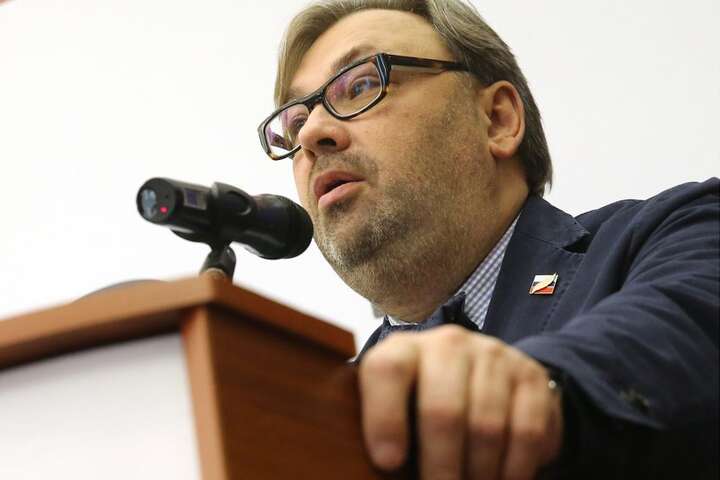
The article "What Russia Should Do with Ukraine," by the Kremlin historian Timofey Sergeytsev, exposed Russia's true goal in Ukraine. The document redefined "Nazism" as a refusal to identify as Russian, setting the entire nation for erasure.
"Denazification will inevitably be de-Ukrainization," the article declares, calling to suppress the language, ban Ukrainian books, and "re-educate" children in Russian schools. The plan demands at least 25 years of occupation to shape a new generation stripped of Ukrainian identity.
"Denazification [...] consists of re-education, which is achieved by ideological repression (suppression) of Nazi attitudes and strict censorship: not only in the political sphere, but also necessarily in culture and education," Sergeytsev wrote.
The article listed the groups of Ukrainians the Kremlin sought to erase:
- Military staff, police, and volunteers are marked for "physical elimination";
- Political elites, deemed "impossible to re-educate" and thus expendable;
- The rest is set for “punishment” – from forced labor to mandatory Soviet-type "re-education."
"A total lustration must be carried out. Any organizations that have associated themselves with the practice of Nazism must be liquidated and banned. A significant part of the masses of the people are also guilty, as they are passive Nazis, accomplices of Nazism," Sergeytsev wrote.
Published in state media and echoed by officials, Sergeytsev's article reflects official policy, not fringe extremism. The impact of this message is clear in intercepted calls between Russian soldiers and their families.
In one phone call, a son confesses to his mother that he was killing civilians and children in Ukraine. "No, you don't kill civilians and children!... You kill fascists, damn it," she corrected, urging to keep his "fighting spirit" to complete "important work.”
"Younger brothers" condemned to slaughter
While Moscow stirs hate by rebranding Nazism, its expansionist push rests on a century-old myth which casts Russians, Ukrainians, and Belarusians as a "Slavic Trinity" of "brotherly nations."
This concept, first coined by Ukrainian thinkers in the 17th century, emerged to justify Russia’s emerging expansion, which they viewed as a way to end the oppression of Orthodox Ukrainians under the Catholic-led Polish-Lithuanian Commonwealth that had ruled its lands for several centuries prior.
Trending Now
While this idea evolved over time, Putin-era propaganda exploits it to whitewash the conquest of Ukraine, equating the invasion with the return of the "lost brother" to the "family."
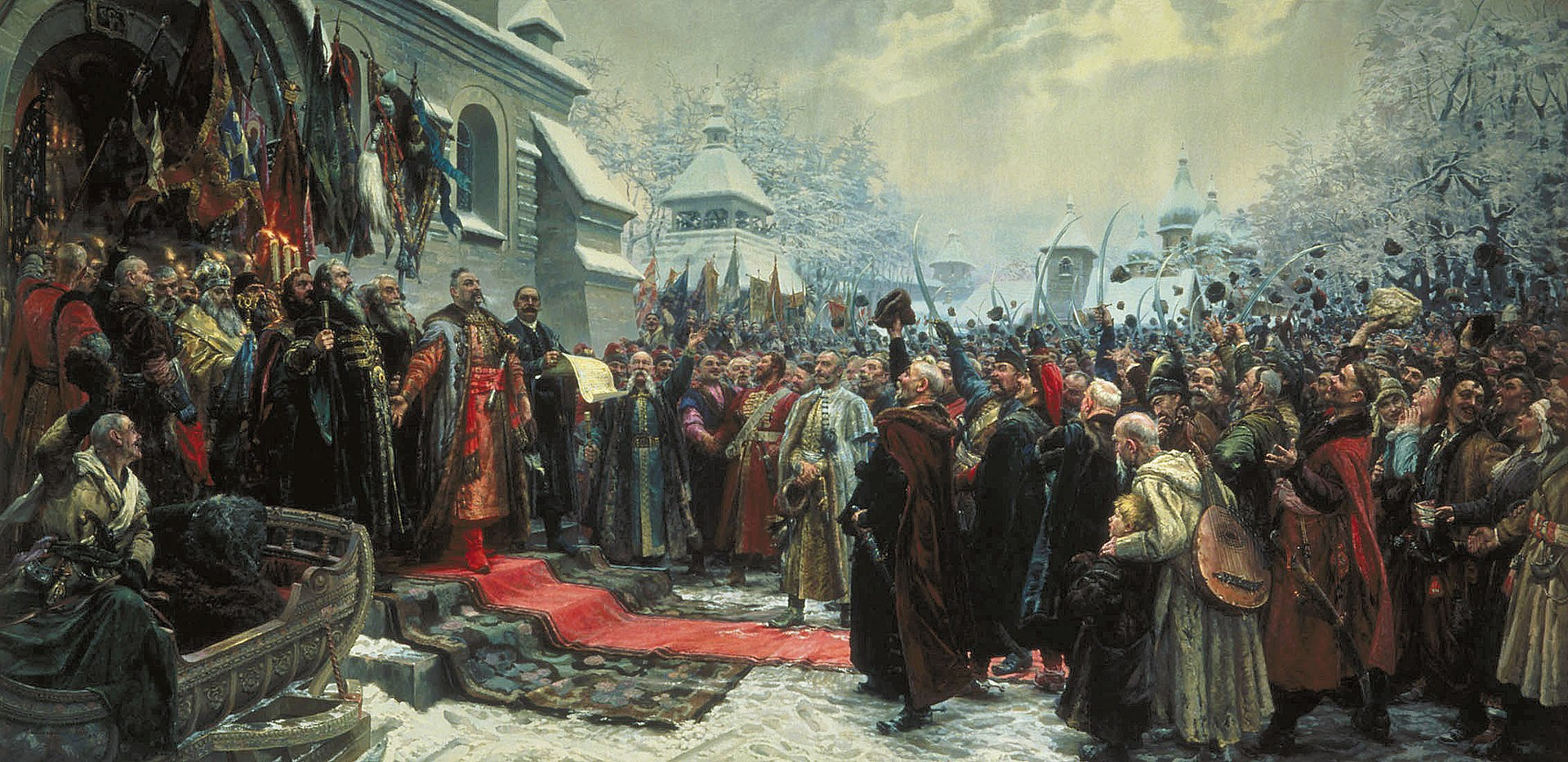
Behind Ukraine’s fateful security deal that unleashed centuries of Russian colonial grip
"Ukrainians are obviously a brotherly nation, but Abel also had a brother called Cain," Russia’s top propagandist Vladimir Solovyev stated on air.
This twisted tale of betrayed brotherhood exposes the dark heart of Russian propaganda – a vision where Ukraine's right for independence is seen as treason that has to be punished.
"What we are seeing today in Ukraine and Donbas is how the West, through the hands of puppet [Ukrainian] presidents, first Poroshenko and then Zelenskyy, unleashed a bloody war, pitting one fraternal nation against another," a Russian pundit said.
The "fraternal nations" myth lays the basis of the broader "Russian World" doctrine, which emerged after the USSR collapse to justify Moscow’s land grabs in post-Soviet states it seeks to bring back under its grip.
This ideology paints a vision of a borderless community tied by the Russian language, Orthodox faith, and shared history that the Kremlin strives to pull into one state and justifies the Kremlin’s intrusion as “defending Russian-speakers” – the playbook it used in Ukraine – ignoring that the Russian presence in post-Soviet states resulted from centuries of colonial rule.
"They were once brotherly nations, but one of them [Ukraine] betrayed another [Russia], and went a separate way, away from Russia's spiritual bonds. Therefore, in Russia's view, it deserves punishment and should be brought back," Liubov Tsybulska says.
Russian propaganda tops Billboard charts
Russia uses multiple formats to spread propaganda, extending beyond journalism to music, cinema, video games, and more tech-savvy tools like bot farms and deepfakes.
In October 2024, the Russian song "Sigma Boy" by teen bloggers Betsy and Maria Yankovskaya caused a stir in Europe. The track went viral on TikTok, Spotify, and YouTube, reaching the top 10 of the Billboard Hot Dance/Pop Songs chart. German MEP Nela Riehl called for a ban in the EU, claiming it promotes "patriarchal and pro-Russian values" and poses a danger for younger audiences.
Russian "Z-music" – named after the war support symbol – openly promotes attacks on Ukraine and the West across global platforms like iTunes, Spotify, and YouTube, says international criminal law expert Anna Vyshniakova, whose team monitors them to enhance moderation.
YouTube has recently stepped in to block Russian performers, including top-tier singers, who support the Ukraine invasion. Vyshniakova says they often exploit nostalgia to sway Russians abroad, playing on the need to feel part of a "strong and powerful" identity while generously utilizing Russian flags and war symbols.
She also adds that YouTube's heavy emphasis on freedom of speech requires official measures to block channels, making the ban possible only after the EU hit Russian intellectual property with the 14th sanctions package in June 2024.
Russia’s fakes in Europe slashed Ukraine's support by 25%
Russian troll factories also target foreign audiences, with a focus on countries crucial for Ukraine's financial and military aid. The Kremlin tailors its message to different groups —well-educated readers are drawn in by cultural references like Dostoevsky and ballet, while the general public is fed conspiracy theories, narratives about "protecting Russian speakers," and NATO expansion, Liubov Tsybulska says.
"It is believed that the more educated a person is, the less propaganda affects them,” she told Euromaidan Press. “Yet, it's a matter of techniques and approaches."
In Europe, the Kremlin’s propaganda mainly targets countries near Ukraine, as they are key military aid providers due to the shared security threat from Russia. In 2023, Poland was the most affected by Russian propaganda, followed by Slovakia, the Czech Republic, Hungary, Germany, and Italy, VoxCheck revealed.
“Slovakia was 80 percent pro-Ukraine,” said Mark Warner, ex-head of the Senate Intelligence Committee. “Two years later, with massive amounts of Russian misinformation and disinformation, you have a pro-Russian government, and 55 percent of Slovaks think America started the war in Ukraine.”
The Finnish tech company Check First also found that Russian agents spread fake news by sending it to European media for fact-checking. The effort hit over 800 news outlets with 2,400 tweets and 200 emails, making them publish 850 false Russian claims as debunked.
Russian fakes target US migrants, Ukraine aid, and America’s global role
In the US, the Kremlin pushes to boost far-right messages and derail support for Ukraine – an effort that helped delay Congress’s vote on Ukraine aid last year, said Clint Watts, head of Microsoft’s Threat Analysis Center.
The Washington Post stressed Russia’s decade-long push to spread anti-government views in America, fighting the US global role. This campaign links to the Kremlin-backed PR firm Social Design Agency, led by Ilya Gambashidze, who was banned in the UK and US.
In just four months last year, the firm churned out 40,000 propaganda pieces, a leak revealed. The fakes pained refugees from Ukraine as criminals, with headlines like "Ukrainian teenagers rape 12-year-old Marta in Rostock" and "Ukrainian refugees beat up gays."
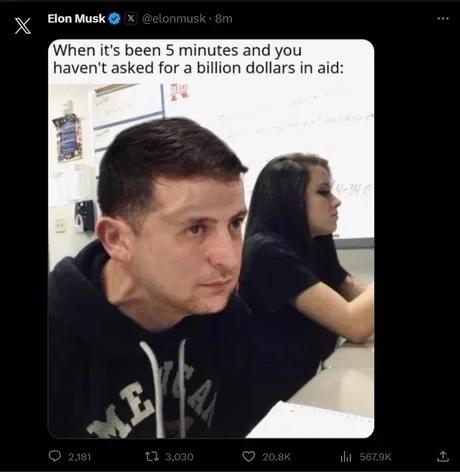
Gambashidze’s project, Doppelganger, uses fake websites that mimic real news outlets to spread Russia-friendly lies. Social Design Agency also runs short-lived AI-made accounts on Facebook, Twitter (X), and YouTube, deleting them once others share the content, making it hard to trace. The company also pushed using Trump’s Truth Social as the sole platform to spread lies “without censorship.”
The campaign exploits divides in the US, boosting content about migrants crossing the US- Mexico border, pushing for border security over Ukraine aid, and framing “white Americans” as the main losers due to foreign aid.
“We create many sources of information that are not tied to us,” admitted Margarita Simonyan, the head of the Kremlin-controlled RT broadcaster, banned in 30 countries. “While the CIA tries to figure out that they’re tied to us, they already have an enormous audience.”
In mid-2024, US intelligence warned that Russia used unwitting Americans to spread its talking points for free, as people trust and share information they think comes from a local source. To expand its reach, RT hired the US-based Tenet media company, which includes far-right creators Tim Pool and Benny Johnson, to push its messages.
“Ukraine is our enemy, being funded by the Democrats,” Pool later said. “Ukraine is the greatest threat to this nation and to the world. We should rescind all funding and financing, pull out all military support, and we should apologize to Russia.”
The Kremlin fakes have already reached the world’s top brass, like Trump’s go-to man, Elon Musk. Journalists behind the SDA exposure traced the origin of Musk’s meme mocking Zelenskyy to a staffer in Putin’s tech and communication department.
“We see, directly coming from Russia, attempts to mask communications that are anti-Ukraine and pro-Russia messages, some of which we even hear being uttered on the House floor," Turner said.

